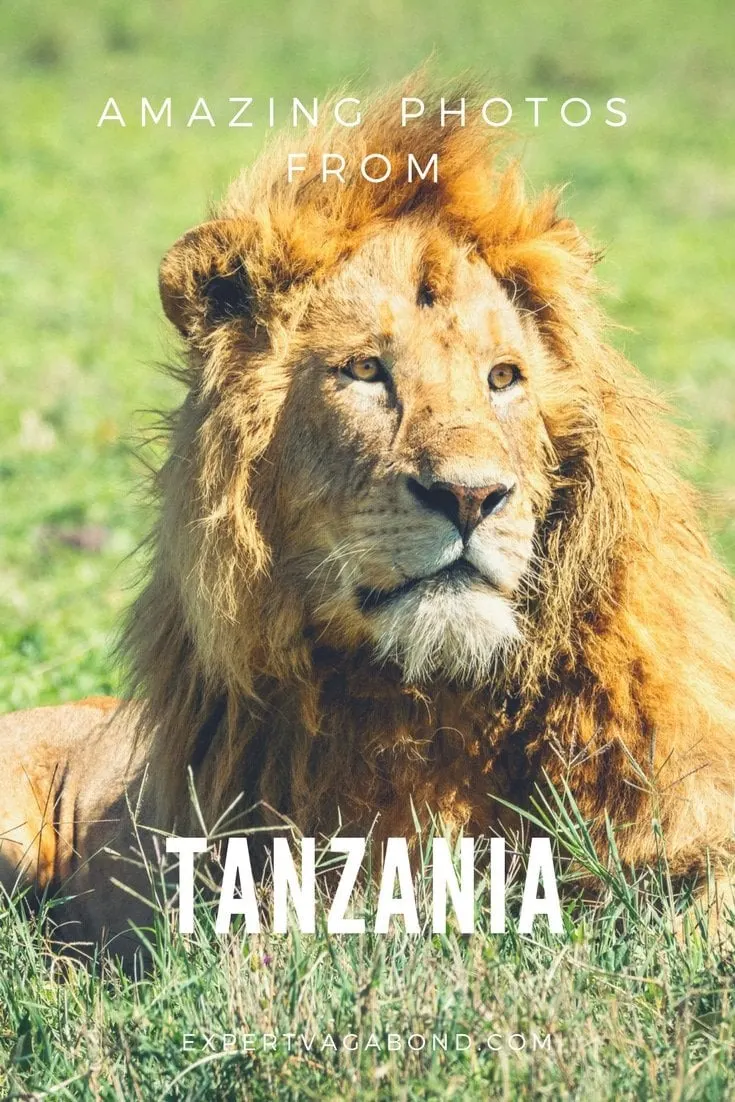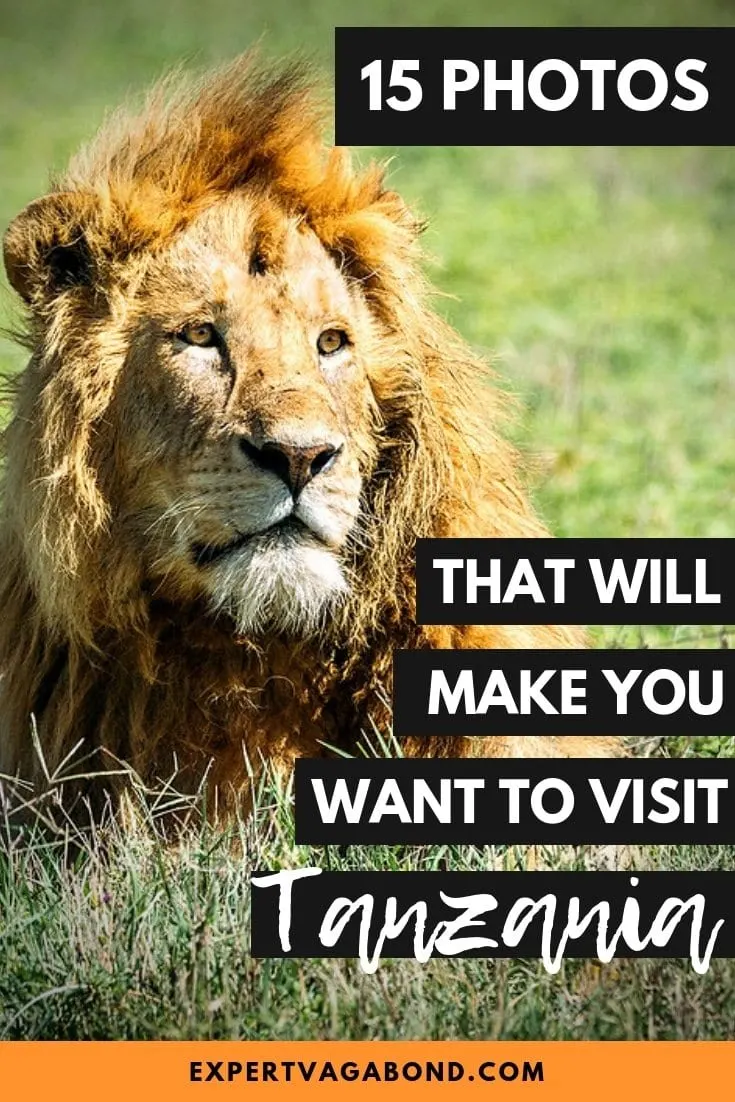
Travel Photography from Tanzania
Tanzania Photo Essay
Here’s a collection of my favorite photos from our safari trip in Tanzania. We managed to see all big five safari animals, hiked to a beautiful waterfall, and met with local tribes.
Last December Anna and I visited Tanzania for our honeymoon, heading out on safari with Soul Of Tanzania. We began our adventure from the town of Arusha, flying into the Serengeti in a small plane.
We then spent a week bumping around on red dusty roads in a Land Rover exploring Africa’s Serengeti National Park, the Ngorongoro Conservation Area, Lake Manyara, and Lake Eyasi.
During the course of the trip we managed to locate all “Big Five” safari animals, journey through the savannah, into green forests, an extinct volcanic crater, and along massive shallow lakes.
Tanzania’s wildlife and geography is as diverse as its people, and finally getting to visit the Serengeti itself was quite a treat, as it’s the world’s most famous National Park.
If you’ve ever dreamed about going on safari in Tanzania, these images should give you a glimpse of what the experience is like!
1: Lake Manyara Flamingos

Flamingos Take Flight Over Lake Manyara
Lake Manyara National Park lies on the edge of the Rift Valley, attracting thousands of pink flamingoes to its brackish waters. Surrounding the lake is a large grassy floodplain, and groundwater forests beyond that.
We stopped for lunch along some algae-streaked hot springs, with a boardwalk leading out over the lake. From there you could watch the huge flocks of flamingos stoop and graze in the water.
Occasionally, they’d all leap into the air and take flight together as a moving wall of pink and black feathers. It was quite a sight!
Did you know that flamingos are actually grey, and get their pink color from a diet of brine shrimp and blue-green algae? The alpha and beta carotenoids in the food they eat is what turns them pink.
2: Visiting The Maasai Mara

Sokoine Shows Us Around His Village
There are about 800,000 Maasai Mara living in Tanzania, many around the Ngorongoro Conservation Area. I’d always wanted to visit the Maasai, so we stopped by the village of Endyoi Nasiyi as we left the Serengeti.
Maintaining a traditional pastoral lifestyle has become increasingly difficult for the Maasai. With their cattle grazing lands diminishing, they’ve become dependent on purchasing food like sorghum, rice, potatoes and cabbage.
Tourist visits help provide the tribe with money to make these purchases. Each village (boma) has a few college-educated & English speaking members like Sokoine, who taught us about his culture.
These village trips can feel a little awkward, like everyone is putting on a show. And they are a bit. However it’s one of the only ways the Maasai can earn money while maintaining their traditional lifestyle.
3: Materuni Waterfall

Hiking to Materuni Waterfall
Outside the town of Moshi, along the slopes of Kilimanjaro, there’s a beautiful and imposing 150 meter high waterfall called Materuni located deep in the lush jungle.
Locals lead hikes to this magical place, usually in combination with a coffee tour. The waterfall hike takes about an hour. On the way we saw brightly colored chameleons and butterflies.
You can swim under these powerful falls — however be warned, the water is very cold! I jumped right in though, never one to turn down a refreshing wild-swim. It makes you feel alive!
After returning from Materuni waterfall, we learned how to make coffee from scratch with a group of Chagga boys, one of Tanzania’s largest ethnic groups.
We helped separate the husk from dried beans, roasted them on an open fire, and finally grinding into powder for brewing — all while singing to keep up a good rhythm. Probably the freshest cup of coffee I’ve ever tasted!
4: Kings Of Ngorongoro

Lions in Ngorongoro
One of the best places to see wildlife in Tanzania, aside from the Serengeti, is the Ngorongoro Crater. The crater is the result of a large volcano that exploded and collapsed into itself about two million years ago.
High crater walls protect a large variety of wildlife at the bottom, including a population of 70+ lions. Tanzania is actually home to about one third of the world’s remaining lions.
We got lucky stumbling onto a pride of 8 East African lions hanging out beside the road! We watched them from the top of our Land Rover — lounging in the sun, playing in the grass like big house cats.
Surprisingly a group of antelope was only 200 feet away, but it seemed these lions weren’t hungry. These were only a few of the lions we saw while visiting Tanzania, but were the closest.
5: Elephant Pool Party!

Elephants at the Four Seasons Pool
Because Anna and I were celebrating our honeymoon in Tanzania, we decided to stay in some nicer hotels. The one we were most looking forward to was The Four Seasons Serengeti. Why?
Well, apart from being a luxury safari lodge in the middle of the world’s most famous national park, the complex itself is almost always surrounded by animals!
You’ll see all kinds of wildlife during their game drives, but you might also spot waterbuck, monkeys, antelope, elephants, and even the occasional leopard while walking the property’s elevated walkways.
There’s a popular watering hole right beside the pool, which often attracts large groups of elephants passing by for a drink. Definitely one of the most unique hotel experiences we’ve ever had!
6: Africa’s Miniature Deer

A Cute Pair of Dik Diks
Standing just over a foot tall, the Dik Dik might just be the cutest safari animal you’ll find in Africa — and probably has the funniest name too. These tiny antelope have long noses and big doe-eyes.
They travel in pairs instead of herds, and dik-diks mate for life. The males may have horns, but the females are larger and the ones in control of the relationship.
These guys are super fast! It was fun watching them dart off as our safari vehicle drove by. Dik-diks are generally shy, hiding from others most of the time.
When startled, they take off in a series of zigzag leaps calling “zik-zik”, hence their funny name. They also mark territory using “tears” that come from that black spot in the corner of their eyes.
7: Lake Eyasi Sunset

Sunset over Tanzania’s Lake Eyasi
We spent a night along the shores of Lake Eyasi, a large salt lake in the fertile Great Rift Valley. Staying at Kisima Ngeda Tent Camp, it was possible to hike up to the cliffs overlooking the lake for a nice view of the region.
The landscape around Lake Eyasi feels very different than the hot, dry grasslands we’ve been traveling through up until that point. It’s wet and tropical, with large palm trees full of squawking birds.
Animal life isn’t as dense here, other than birds, but the reason most people visit is to meet with the local Hadza and Datoga tribes, curious to see their ancient hunting and blacksmithing abilities in person.
I climbed up to a high viewpoint in order to watch the sunset over the mostly-dry lake. During the wet season, it can actually get pretty deep and attracts groups of wading hippos cooling off in the salty water.
8: Hunting With The Hadzabe

Hadzabe Village near Lake Eyasi
The Hadza bushmen are one of the last true hunter-gatherer tribes left in the world. About 800 of them live semi-nomadically in the dry woodlands of remote Lake Eyasi — surviving on wild game, berries, and root vegetables.
We got up early one morning to visit a Hadza encampment, learn a little about their culture, and tagged along as they went hunting for small birds and antelope using hand-made bows and poison-tipped arrows.
The story of the Hadza is fascinating but sad. Basically their land has slowly been stripped away from them by commercial agriculture, the government, and wealthy Arab wildlife trophy hunters.
Their traditional way of life, which hadn’t changed much in thousands of years, is under threat. Like the Maasai, some have turned to tourism to support their families with limited other options available. Efforts to settle them in more modern farming communities have largely failed.
9: Dirty, Dirty Hippopotami

Africa’s Most Dangerous Animal
Anna’s favorite African animal is the hippo, so there was no way we were going to miss them on this trip! Luckily she got her fill of these massive dirty water pigs in the Serengeti and at Lake Manyara.
Ok, maybe they aren’t technically pigs. But they do have a habit of belching, snorting, and loudly shooting explosive diarrhea out their backsides… not MY favorite animal.
The hippopotamus is also Africa’s most dangerous animal, if you can believe that. They kill an estimated 500 people every year. They are extremely territorial, and much faster than they look!
I went kayaking with them in South Africa once, and it was a little unnerving to be so close. While it’s fun to watch them play in the water and splatter poo everywhere, you should always stay aware of your surroundings.
10: Leopards Of Tanzania

Baby Leopard Making Faces
The one animal I was most looking forward to seeing in Tanzania on safari was the leopard. Locating them can be a bit tricky sometimes, which is why it’s known as Africa’s most elusive big cat.
Luckily we were traveling through the Serengeti’s Seronera River Valley, one of the best places to find them in the wild. We eventually witnessed four different individuals perched in yellow-barked acacia trees.
However my favorite sighting was at Lake Manyara National Park while driving down one of the bumpy dirt roads. A baby leopard suddenly appeared just on the edge of the brush, about 50 feet away.
The cat briefly hesitated as we approached, then disappeared back into the trees. But not before I snapped the photo above. We continued searching for his mom, but never found her.
11: The Datoga Tribe

Narajah’s Beautiful Jewelry & Tattoos
Also living within the Rift Valley is the Datoga people. Originating from the Ethiopian highlands 3000 years ago, this ancient tribe moved South into what’s now Kenya and Tanzania.
The Datoga are expert blacksmiths — forging arrowheads, bracelets, and knives out of aluminum and brass over open fires. They trade these products with their Hadza neighbors in exchange for meat, honey, and animal hides.
We stopped in to visit with Narajah (pictured above) and learn a little bit more about her family and culture. Narajah is just one of her husband’s 7 wives. Each has her own house for raising their children.
Apparently Narajah’s husband gave her 10 cows as a marriage gift. When she asked Anna how many cows I offered, she wasn’t very impressed to learn all she got was a cat! Apparently I’m cheap…
A common body modification among women in the tribe is the tatooing of circular patterns around the eyes. It helps identify who’s part of a certain family and, to the Datoga ethnic group in general.
12: Magic Baobab Trees

Massive Baobab Tree
Finally! My first Baobab tree. I’d heard of these ancient giants for years, and didn’t even realize any grew in Tanzania. I thought the only place you could find them was Madagascar…
There are actually 8 species of baobab around the world. The largest is Adansonia digitata, which grows up to 30m tall in Tanzania. I think baobabs have to be the most iconic trees in Africa.
The trees vary in size depending on the season, as they can hold up to 100,000 liters of water within their trunks.
Hollowed out trunks of the baobab trees are often used as shelter by Hadza Bushmen, especially when it rains. Some trees can accommodate up to 30 people inside!
13: Angry Blue Monkeys

Blue Monkey Screaming in the Trees
Blue monkeys are not really blue, more of an olive or grey color. They live largely in the forest canopy, eating fruits, figs, insects, leaves, twigs, and flowers.
We came across a group in the trees on the edges of Lake Manyara National Park, calling out to each other. Some families can be composed of up to 40 individuals, mostly female, with one male leader of the group.
Other monkeys we saw on safari in Tanzania include vervet monkeys, baboons, and the black-and-white colobus. Look at those teeth! I wouldn’t want to get too close — even if they do prefer eating fruit.
14: Buffalo VS. Land Rover

Buffalo Encounter at Lake Manyara
I love this shot at Lake Manyara. An old Cape Buffalo stands off against a Land Rover, each waiting for the other to make a move.
Buffalo are very successful in Africa because they aren’t picky eaters. We saw hundreds of them during a week of safari drives through Tanzania. Munching away at the grasses, or rolling around in the mud.
However they can become aggressive towards vehicles, charging them if they feel threatened. They have also been known to gore hunters after being wounded.
Buffalo herds stick together, and when attacked by predators, will sometimes return to save one of their own. They’re not afraid of fighting lions either, or killing lion cubs as a preventative measure!
15: Endangered Black Rhino

Lone Black Rhino in the Distance
The last of the big five animals we wanted to see in Tanzania was found in Ngorongoro Crater. The black rhinoceros is critically endangered, with only about 5500 left in the world.
Ngorongoro is home to about 26 of them, and because they are on top of everyone’s list to see, safari guides coordinate with each other over radio for news of recent sightings.
While we weren’t able to get very close (vehicles in the crater aren’t allowed to drive off-road), we did manage to spot a single rhino walking in the distance.
The poaching of these animals for their horns is still a problem, however it’s been reduced over the past few years due to improved conservation efforts & security.
Tanzania Safari Travel Tips
The safari tour we booked was through Soul Of Tanzania. We had an amazing time! Their jeeps are very comfortable with big windows, wifi, and plugs to charge your electronics.
Our guide Huruma was very friendly, knowledgeable, stopped frequently for photos, and was plenty cautious with the animals.
WHEN TO GO – Tanzania’s primary rainy season is during March, April and May. The famous Great Migration happens during the dry season, between July and early October. We were there in December, during the “mini” wet season. No matter when you go, you’ll see tons of animals.
COSTS – Going on safari in Tanzania isn’t cheap, however there are options for different budgets. National Park fees alone can cost $70 a day. While self-driving is technically possible, it’s incredibly complex to arrange, and often just as expensive as a tour.
BUGS – Beware the Tsetse flies, they suck! Literally. These painful and annoying flies are attracted to dark colors – especially blue and black. This is the reason everyone on safari wears white or tan clothing!
PHOTOGRAPHY – If there’s one place where you’ll want to splurge on a zoom camera lens, it’s on safari in Africa. I’d recommend something at least 200mm, but 400mm is even better. I rented a huge 400mm lens from LensRentals.com (and highly recommend them). ★
TRAVEL VIDEO: Tanzania Safari Experience
Subscribe to my YouTube Channel for new Adventure Travel Videos!
(Click to watch TANZANIA SAFARI | Exploring The Serengeti on YouTube)
[su_box title=”Travel Planning Resources For Tanzania” style=”noise” box_color=”#333333″ title_color=”#FFFFFF” radius=”3″ class=”resource-box”]
Packing Guide
Check out my travel gear guide to help you start packing for your trip.
Book Your Flight
Ready to fly? Here’s how I find the cheapest airline flights.
Rent A Car
Discover Cars is a great site for comparing car prices to find a deal.
Cheap Accommodation
Learn how I save money booking hotels & vacation apartments.
Protect Your Trip
Don’t forget travel insurance! Protect yourself from possible injury & theft abroad. Read why you should always carry travel insurance.
[/su_box]
Enjoy This Post? Pin It!
[su_row class=””]
[su_column size=”1/2″ center=”no” class=””]

[/su_column]
[su_column size=”1/2″ center=”no” class=””]

[/su_column]
[/su_row]
READ MORE TRAVEL TIPS
I hope you enjoyed my photo from Tanzania! Hopefully you found the post useful. Here are a few more wanderlust-inducing articles that I recommend you read next:
Any questions about going on safari in Tanzania? Are you planning a trip? Join the conversation on Facebook, Instagram, or Twitter to share!

